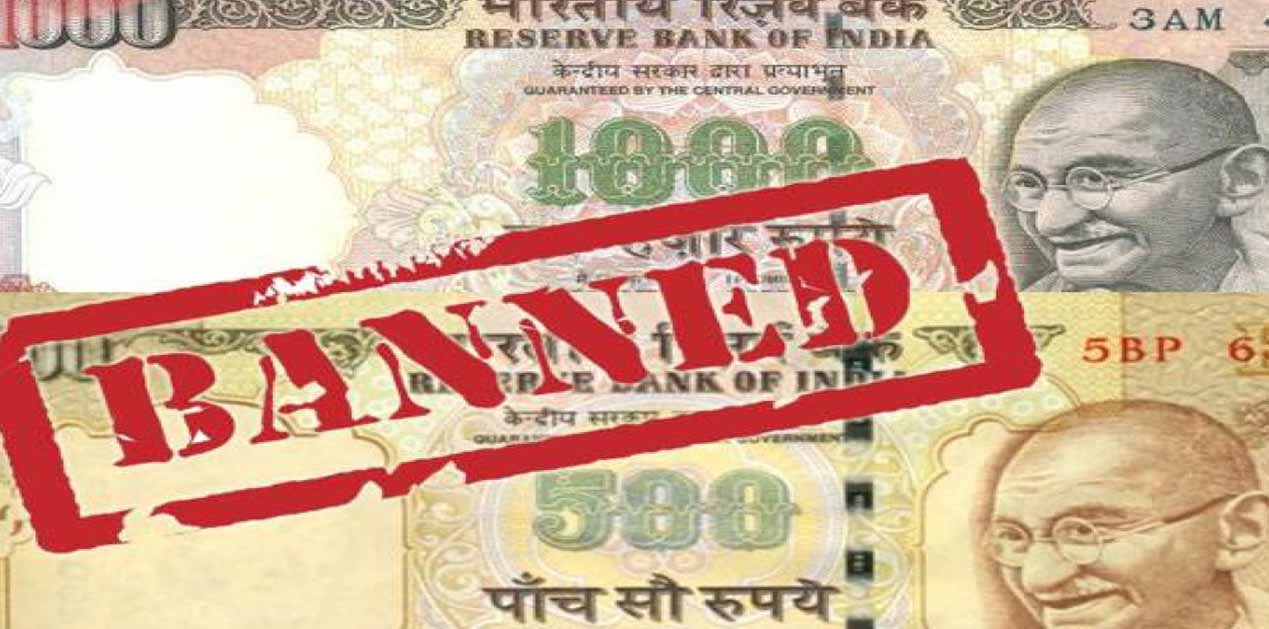That 99 per cent of the de-legalised Rs 500/1,000 denomination notes was returned back to the Reserve Bank of India (RBI) has been cited by opposition parties, experts and the media alike as the sole test of failure of demonetisation (which, for brevity, I shall henceforth refer to as de-mon). But it is a less than fair assessment of what was essentially a multipurpose project. The one-line conclusion certifying it as a failure judges a multidimensional corrective venture on the basis of one single parameter: the quantum of notes returned. This conclusion has become popular due to the tempestuous and irrational political debate we witnessed at the end of 2016. The media epilogue that Narendra Modi’s de-mon is a rout, based on superficial logic, is a bluff. But to call the bluff, we need a surgical analysis of de-mon, which was missing in the debate then and is missing even now.
The background to de-mon
A flashback to November 2016 when demonetisation was announced. The background to de-mon was the unprecedented rise in the circulation of high-value notes (500/1000) from Rs 1.5 lakh crore in 2004 to almost Rs 15.5 lakh crore when de-mon was announced — with their share in the total currency in circulation going up from 34 per cent to over 88 per cent. The Reserve Bank of India had told the government that a third of the high-value notes which moved out of the banking system, some Rs 6 lakh crore, never returned. They circulate outside the system — the inference being that this huge unmonitored cash was financing and building a massive black economy.
This was manifest in the steep rise in gold, stock and land prices by almost ten times in the six years from 2004 to 2010 as compared the previous five years, 1999-2004. That asset price rise was not stoked by any matching real growth. It was the other way round. The spurious rise in asset values generated the mirage of high growth in India like it happened in the USA prior to 2008. This was evident from the fact that despite the high growth of 8.6 per cent recorded in the six years [2004-2010], jobs rose by just 2.7 million as compared to the job growth of 60 million in the earlier five-year period (1999-2004) on the strength of a medium growth rate of 5.4 per cent.
And moreover, while the latter high-growth period witnessed an annual inflation rate of 6.5 per cent, the earlier five-year average growth period recorded an inflation rate of just 4.6 per cent. And further, the external sector did well in the medium-growth period with the closing years posting a current account surplus of $20 billion after 25 years of relentless current account deficit. But the latter six-year high-growth period accounted for a current account deficit of hundreds of billions of dollars.
It did not need a seer to say that the hyper GDP growth in the latter six years was just wealth-led growth — a mirage that yielded neither jobs nor gave external or internal comfort to the economy. The reason for this spurious growth clearly was the high asset prices, which were fuelled only by an unprecedented rise in high-denomination notes. No economist or commentator has disputed either the figures or the conclusions based on them. And yet none of these critical facts was noticed in the politically and ideologically surcharged debate on de-mon which was reduced to a single-point issue to the exclusion of its other critical dimensions.
Politics reduced de-mon to a single test
The debate on de-mon became utterly political, casting economics aside. Economists and camera-holding journos looked at people queuing up at banks to exchange or deposit the old notes and turned populist in opposing de-mon like politicians and media. De-mon was such an India-specific issue that it had no parallel elsewhere in the world. Foreign experts, who had no knowledge of India-specific issues, lambasted de-mon as a disaster. Local experts led by Dr Manmohan Singh said Narendra Modi has destroyed the economy. With the powerful national and global guild of economists, media and the opposition launching a war on him, Modi singlehandedly led the de-mon politics from the front, withstood the assault and went through the ordeal by fire.
He directly communicated with the people and requested them to bear with the trouble he was giving them. And they willingly endorsed him, as his huge electoral victories since he unveiled de-mon demonstrated. But in the process, Modi had to use the singularly popular logic, which they would easily understand — namely to detect and eliminate black money — to defend de-mon. And by inference, only the notes that did not return to the banks came to be regarded as black money detected and eliminated. The result was that a multi-dimensional correction to the economic drift came to be reduced by anti-Modi politics to the only proposition, that is: whether de-mon was a failure or success would depend on the sole test of how much black cash would or would not return to the banks. This reductionist logic has obscured a more wholesome view of the de-mon effect and has now demonised the project itself.
Multidimensional correction aimed and achieved
Apart from the fact that de-mon was aimed at puncturing the unprecedented high-denomination cash stock buildup that stoking an asset price rise and threatening the economy with an unmanageable future crisis, it was intended as a multidimensional correction to the economy. The multiple objectives inherent in the de-mon project were: (1) to catch black money; (2) to prevent its growth; (3) to expand the taxpayer base; (4) to arrest and deflate cash-stoked asset prices; (5) to bring down the burgeoning cash stock, particularly the high-denomination notes that had become the villain; (6) to suck up the excess cash with the public that was building a parallel economy to the banking system; (7) to enable the banks to multiply the additional deposits by fractional reserve model as lendable resources; (8) to bring down the interest rates; (9) to increase the share of financial savings in household savings; (10) to crash the unaffordable land prices to make housing affordable; (11) to organise the unorganised sector and provide organised support to it; (12) to shift from a jobless high growth to growth with jobs — namely growth of a real economy; and (13) eliminate fake currency and starve Kashmir terrorists and naxalites of funds.
The list is not exhaustive still. Against the background of a monumental cash-driven asset price-led deceptive growth, none of these goals could be attained except by sucking away the huge cash build-up through a high-value note ban. The ban would destroy the appetite for high-value notes, and transform the cash-led economy into a less-cash economy. So tested, Modi’s de-mon project has been a huge success in achieving its multiple objectives. But, unfortunately, the experts and the media who have taken a position against de-mon from the word go ceased to be objective to look at its multi-dimensional impact. Instead, they were actually waiting to pronounce it as a failure and once the RBI announced that 99 per cent of the de-legalised notes were returned, they clutched at it as the sole index of its failure. Equating the success of the anti-black money agenda of the de-mon project with only the quantum of de-legalised notes not returned is irrational and wrong. If black money holders daringly deposit the de-legalised notes in the banks, it becomes the subject of a tax probe. This aspect is completely ignored by the anti de-mon — read as anti-Modi — rhetoric which came to be regarded as a de-mon discourse.
Black money agenda a success, not failure
Before examining how far the de-mon project achieved its multi-dimensional objectives or the course correction it set as its goal, take the popular objective of unearthing black cash. The de-legalised notes not deposited in the banks, of course, give open-and-shut proof of black cash exposed by de-mon. But it does not mean that black cash deposited in the banks will go undetected. If the people who had black de-legalised notes took a risk and deposited them in banks, it only means that the income tax authority will have to scrutinise the deposits and collect taxes on such deposits — which of course takes time. And that is happening.
Some Rs 2.9 lakh crore deposits of cash is being investigated for tax. Black money detection under de-mon falls into three categories: (1) undisclosed income in de-legalised notes admitted Rs 29,000 cr; (2) old notes not deposited Rs 16,000 crore; and (3) most importantly, deposits of Rs 2.90 lakh crore under tax probe. The last component, which is huge, is being completely disregarded to conclude, totally unfairly, that the black money agenda of de-mon has bombed. The actual discovery of Rs 45,000 crore of black money and the potential discovery of Rs 2.9 lakh crore under probe — uncovering a total of Rs 3.35 lakh crore as actual and potential black money — has been achieved only because of de-mon. Even if half the potential black cash deposit is eventually taxed, that would mean detection of some Rs 1.5 lakh crore of black money, most of which would be recovered as tax and penalty.
None of the voluntary disclosure schemes attempted earlier was a success. The two such schemes which yielded a fair amount of tax were the one in 1997 which yielded Rs 9,500 crore and the latest in 2016 which yielded Rs 29,400 crore. De-mon is bound to yield multiples of the amount of tax extracted through voluntary disclosures in the past. Besides the uncovering of actual and potential black money of Rs 3.35 lakh crore, de-mon has expanded the individual income tax base. For 2016-17, as compared to the earlier year, some 57 lakh more assessees have filed returns, advance tax collections are up by 42 per cent and self assessment tax by 34 per cent. Ignoring such vital facts to conclude the de-mon project as a failure in uncovering black money is definitely superficial. It is also recklessly premature as, at any rate, one will have to wait till the tax probe is over to know how much the tax is recovered on the `2.9 lakh crore deposits under probe. By all counts the black money agenda of de-mon is a success, not a failure by any standard.
The author is a well-known commentator on political and economic affairs.
Published in The New Indian Express on 5 September 2017.
Image Source: https://inc42.com/resources/impact-demonetisation-various-sectors-can-done/










Post new comment